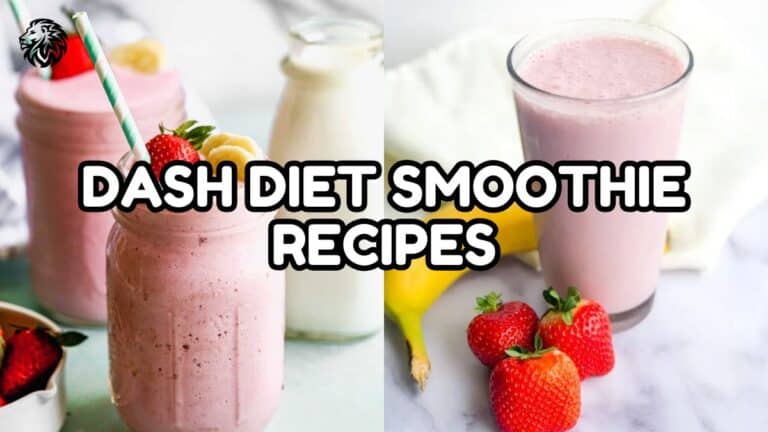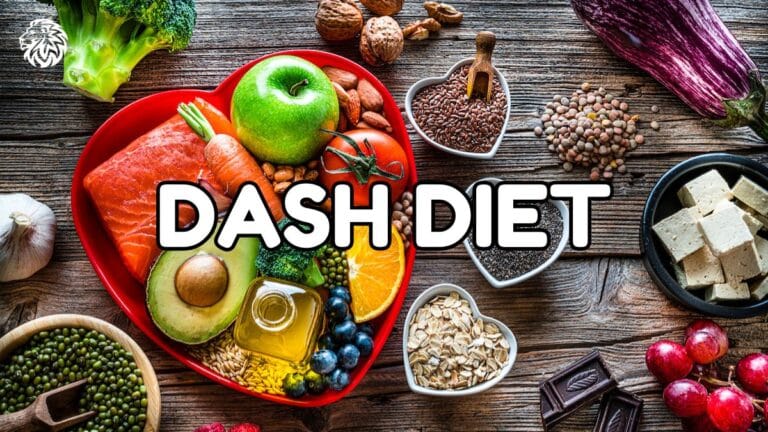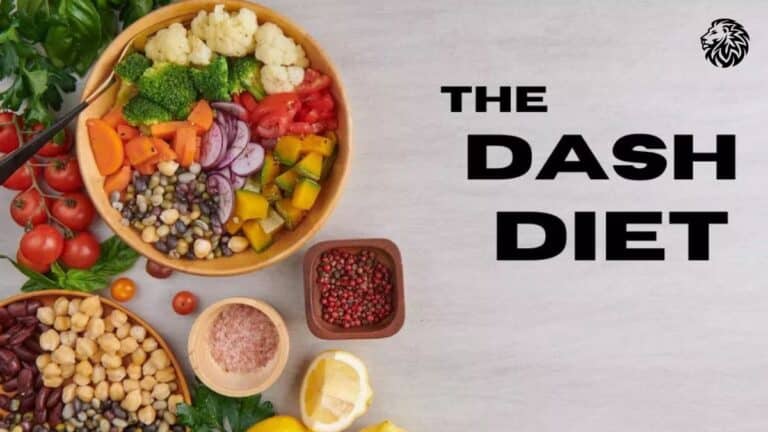The DASH diet, or Dietary Approaches to Stop Hypertension, is well-known for its ability to help manage blood pressure. But, beyond that, many people wonder how quickly they can shed pounds following this eating plan. If you’re looking for a way to lose weight while eating a healthy, balanced diet, the DASH diet could be a great option for you. However, how fast you lose weight on the DASH diet can vary depending on several factors, such as your starting weight, activity level, and adherence to the diet.
In this post, we’ll explore how the DASH diet works for weight loss, what factors influence how fast you’ll see results, and tips for maximizing your progress.
Understanding the DASH Diet
Before diving into the weight loss aspect, it’s important to understand what the DASH diet is all about. Originally developed to combat high blood pressure, this eating plan focuses on foods rich in nutrients like potassium, calcium, and magnesium. It encourages whole grains, fruits, vegetables, lean proteins, and low-fat dairy, while limiting foods high in saturated fats, sodium, and added sugars.
By reducing processed foods and emphasizing nutrient-dense options, the DASH diet not only supports heart health but can also promote weight loss.
How Does the DASH Diet Help With Weight Loss?
The DASH diet is not primarily designed as a weight loss program, but its structure can naturally lead to shedding pounds. Here’s how:
- Calorie Control: Since the diet emphasizes whole foods like fruits, vegetables, and lean proteins, it tends to be lower in calories compared to typical Western diets. By focusing on nutrient-dense foods and controlling portion sizes, many people unintentionally consume fewer calories, which leads to weight loss.
- Reduction in Processed Foods: Highly processed foods are often high in calories, sugars, and unhealthy fats. The DASH diet discourages these foods, which helps reduce your calorie intake without feeling deprived.
- Balanced Macronutrients: The diet includes a good mix of carbohydrates, proteins, and healthy fats, which keeps you full longer. This helps curb snacking and overeating, two common culprits behind weight gain.
How Fast Can You Lose Weight on the DASH Diet?
There’s no one-size-fits-all answer to how fast you’ll lose weight on the DASH diet, as it depends on individual factors like your starting weight, metabolism, physical activity, and how strictly you follow the plan. However, here’s what you can generally expect:
Week 1 to Week 2: Initial Water Weight Loss
Like many healthy eating plans, you may experience rapid weight loss during the first week or two of following the DASH diet. This is mostly water weight. As you reduce your intake of sodium and processed foods, your body releases excess water stored due to high sodium levels. It’s not unusual to lose anywhere from 1 to 5 pounds in the first week.
While this initial loss is motivating, it’s important to recognize that this is not fat loss but rather the body flushing out water. Still, it’s a great start that shows your body is adjusting to a healthier way of eating.
Week 3 to Week 4: Fat Loss Starts to Kick In
After the initial drop in water weight, your body begins to lose fat. At this stage, weight loss slows to a steadier pace, typically around 1 to 2 pounds per week. This rate is considered healthy and sustainable, as it’s more likely to come from fat rather than muscle or water.
Losing 1 to 2 pounds per week may not seem like much, but over the course of a month, this could add up to 4 to 8 pounds of fat loss, which is a significant achievement.
Month 2 and Beyond: Continued Steady Progress
As you continue with the DASH diet, your body will maintain its slow but steady pace of weight loss. This is because the diet is designed for long-term health rather than drastic, short-term weight loss. However, by staying consistent with the plan and incorporating regular physical activity, many people can expect to lose an additional 4 to 8 pounds each month.
It’s worth noting that as you lose weight, your calorie needs decrease, so your weight loss may slow slightly over time. This is normal and expected as your body adjusts to a healthier, lower weight.
Factors That Influence Weight Loss Speed
Several factors can affect how quickly you lose weight on the DASH diet:
- Starting Weight: If you have more weight to lose, you may notice faster progress at the beginning of your journey. Those with higher body fat percentages often see larger initial drops in weight.
- Caloric Deficit: The more consistent you are in creating a calorie deficit (burning more calories than you consume), the faster you’ll lose weight. However, it’s important not to restrict calories too drastically, as this can slow metabolism and lead to muscle loss.
- Exercise: Adding physical activity can significantly speed up weight loss. Aerobic exercises like walking, running, or cycling, combined with strength training, can help burn fat more effectively while preserving muscle mass.
- Metabolism: Your metabolism plays a key role in how fast you lose weight. Factors such as age, genetics, and hormone levels can impact the rate at which your body burns calories.
- Adherence to the Diet: The more strictly you follow the DASH guidelines, the more effective the diet will be. While occasional indulgences won’t derail your progress, consistently veering off track can slow weight loss.
Tips for Maximizing Weight Loss on the DASH Diet
To see the best results and lose weight more effectively, consider these tips:
- Watch Portion Sizes: Even healthy foods can lead to weight gain if eaten in large quantities. Be mindful of portion sizes, especially when it comes to grains and high-calorie healthy fats like nuts and avocados.
- Track Your Intake: Keeping a food diary or using a tracking app can help you stay on top of your calorie intake and ensure you’re staying within your target range for weight loss.
- Increase Physical Activity: Regular exercise not only boosts weight loss but also improves cardiovascular health and overall well-being. Aim for at least 150 minutes of moderate exercise per week.
- Stay Hydrated: Drinking plenty of water can support weight loss by keeping you full and preventing overeating. It also helps with digestion and energy levels.
- Plan Meals Ahead: Preparing meals in advance can help you stick to the diet and avoid unhealthy, last-minute food choices.
Conclusion: A Sustainable Path to Weight Loss
The DASH diet offers a well-rounded approach to healthy eating that can support steady, sustainable weight loss. While it’s not a crash diet promising rapid results, it’s an effective way to lose 1 to 2 pounds per week, which adds up over time. By following the plan closely and incorporating regular exercise, you can achieve lasting weight loss while improving your overall health.
Whether you’re looking to drop a few pounds or embark on a longer weight loss journey, the DASH diet provides a heart-healthy, balanced approach that’s easy to stick to. With patience and consistency, you’ll see results that last.
Frequently Asked Questions (FAQs) about How Fast Can You Lose Weight on the DASH Diet
1. How much weight can I lose in the first week of the DASH diet?
In the first week, you may lose 1 to 5 pounds, mostly due to water weight as your body adjusts to lower sodium intake.
2. How fast can I expect to lose fat on the DASH diet?
After the initial water loss, you can expect to lose about 1 to 2 pounds of fat per week, which is a healthy and sustainable rate.
3. Does exercise help speed up weight loss on the DASH diet?
Yes, adding regular exercise, especially a mix of cardio and strength training, can increase your calorie burn and accelerate fat loss.
4. Can I lose weight faster by eating fewer calories on the DASH diet?
While cutting calories can help, drastically reducing your intake can slow your metabolism. Aim for a moderate calorie deficit for steady progress.
5. Will my weight loss slow down over time?
Yes, as you lose weight, your body requires fewer calories, so your rate of weight loss may slow slightly. This is normal and expected.
6. Can I lose weight on the DASH diet without exercising?
While weight loss is possible without exercise, combining the DASH diet with physical activity leads to better results and improves overall health.
7. How long should I follow the DASH diet to see significant weight loss?
Most people see steady weight loss of 4 to 8 pounds per month. Following the DASH diet for several months can lead to significant, sustainable results.
8. Is the DASH diet suitable for long-term weight maintenance?
Yes, the DASH diet promotes healthy eating habits, making it an excellent option for maintaining weight loss over the long term.
9. Can I still eat my favorite foods while on the DASH diet?
Yes, you can enjoy your favorite foods in moderation, but it’s essential to focus on nutrient-dense choices and limit high-sodium, processed foods.
10. How important is portion control on the DASH diet for weight loss?
Portion control is crucial. Even healthy foods can cause weight gain if eaten in large quantities, so be mindful of serving sizes to achieve weight loss goals.
References
- National Heart, Lung, and Blood Institute. (n.d.). Your guide to lowering your blood pressure with DASH. Retrieved from https://www.nhlbi.nih.gov/sites/default/files/publications/WeekOnDASH.pdf
- Juraschek, S. P., Miller, E. R., Weaver, C. M., & Appel, L. J. (2017). Effects of sodium reduction and the DASH diet in relation to baseline blood pressure. Journal of the American College of Cardiology, 69(13), 1409-1418. Retrieved from https://pubmed.ncbi.nlm.nih.gov/26990451/
- Appel, L. J., Brands, M. W., Daniels, S. R., Karanja, N., Elmer, P. J., & Sacks, F. M. (2006). Dietary approaches to prevent and treat hypertension: A scientific statement from the American Heart Association. Hypertension, 47(2), 296-308. Retrieved from https://pubmed.ncbi.nlm.nih.gov/20101007/
- Pennington Biomedical Research Center. (n.d.). DASH diet: What you need to know. Pennington Nutrition Series. Retrieved from https://www.pbrc.edu/training-and-education/community-health-resources/pennington-nutrition-series/dash-diet-what-you-need-to-know.aspx







